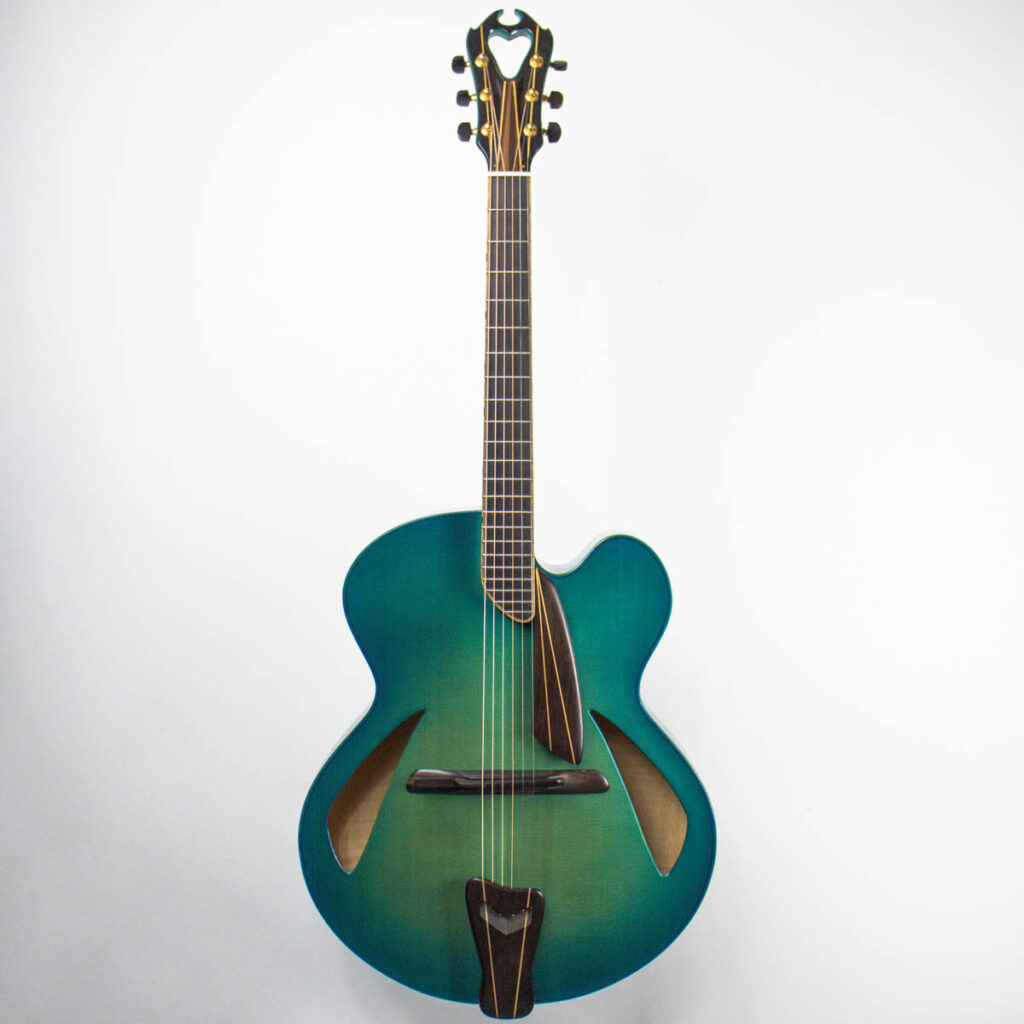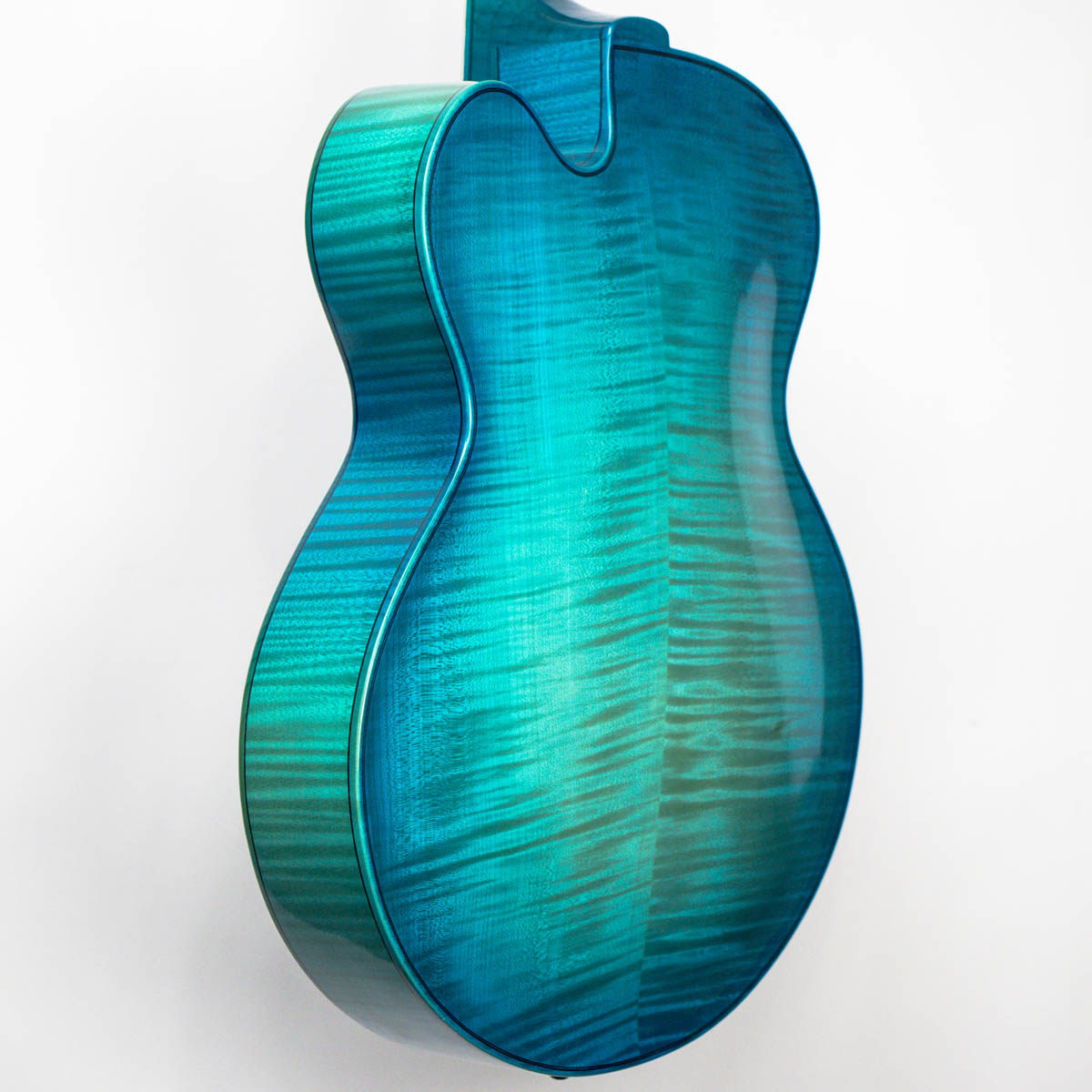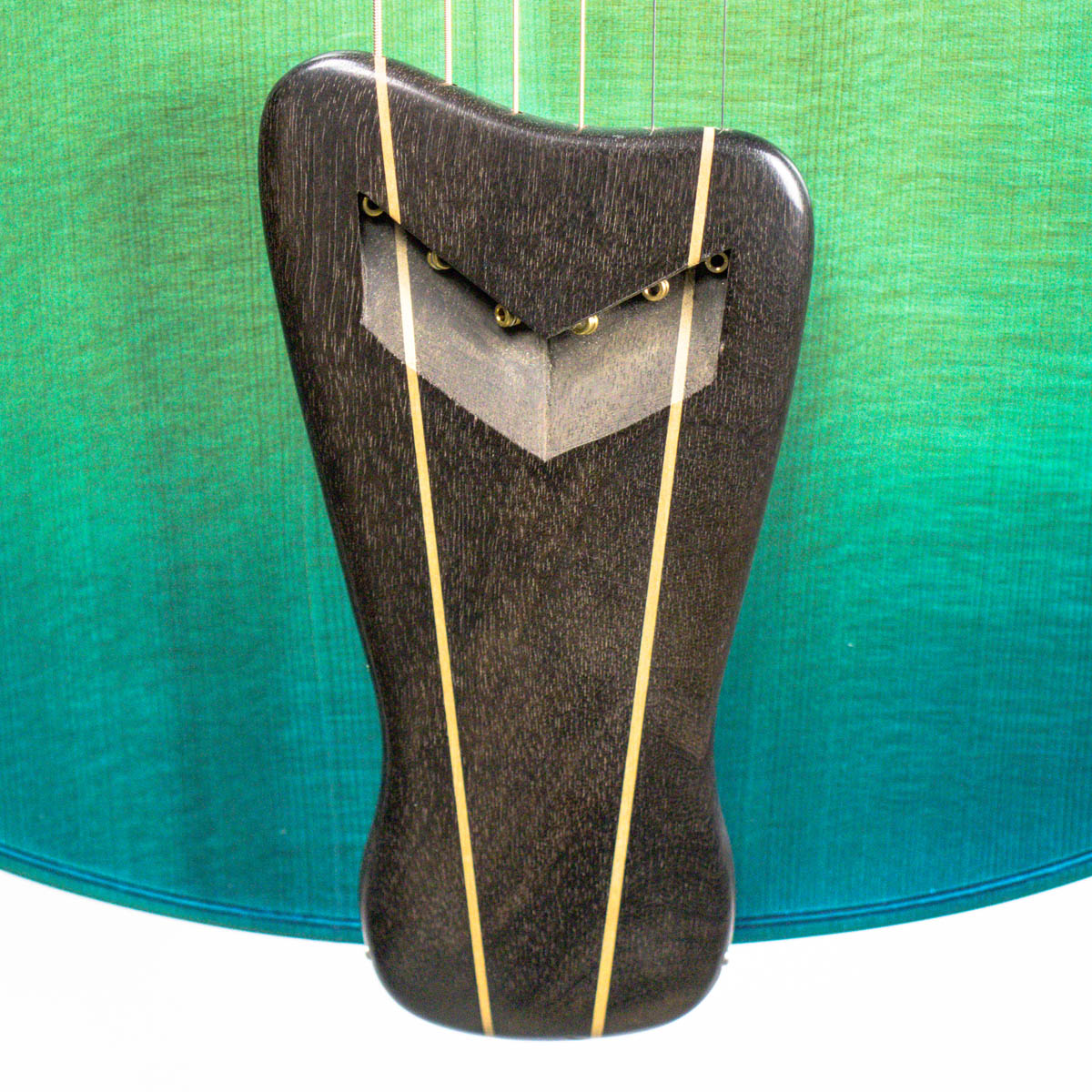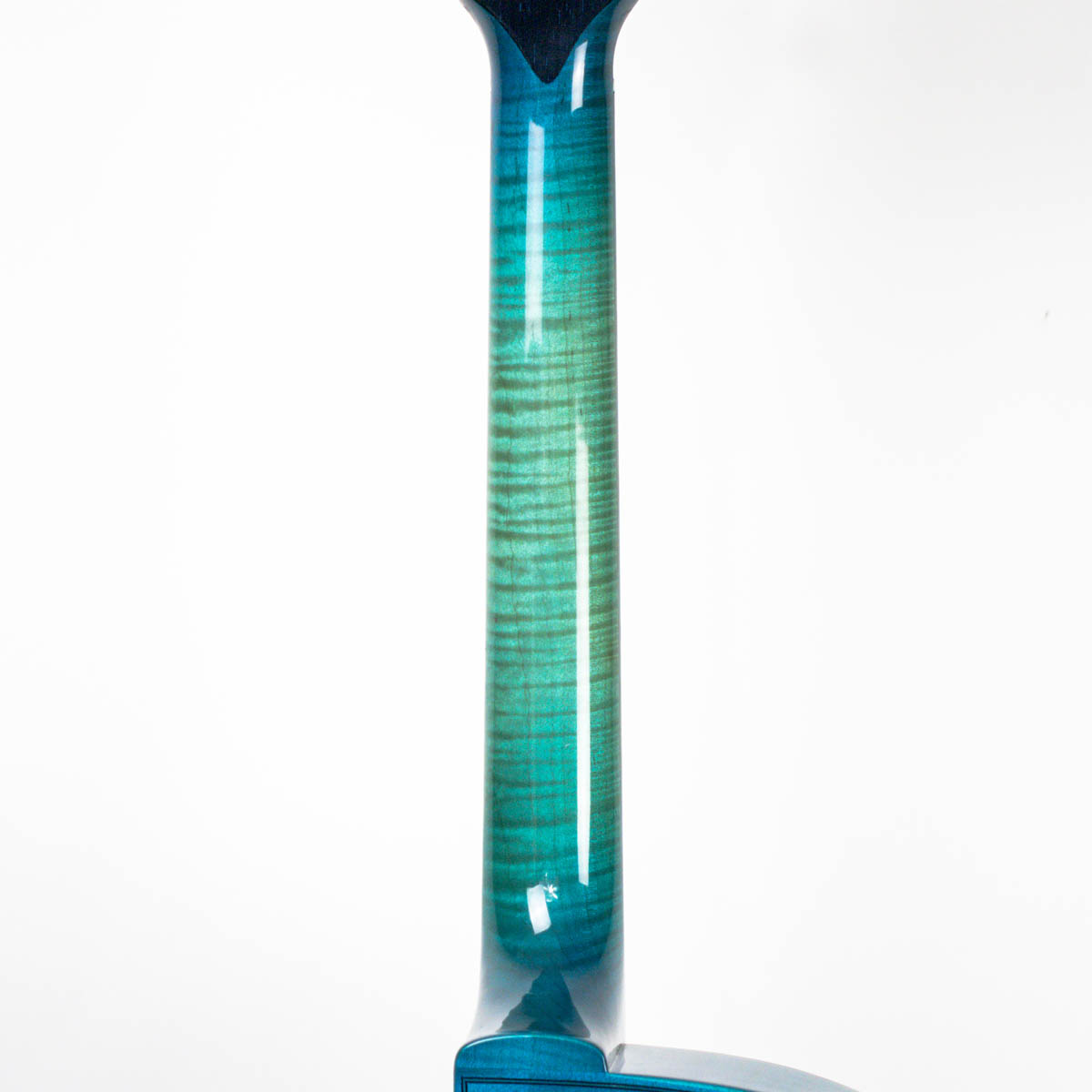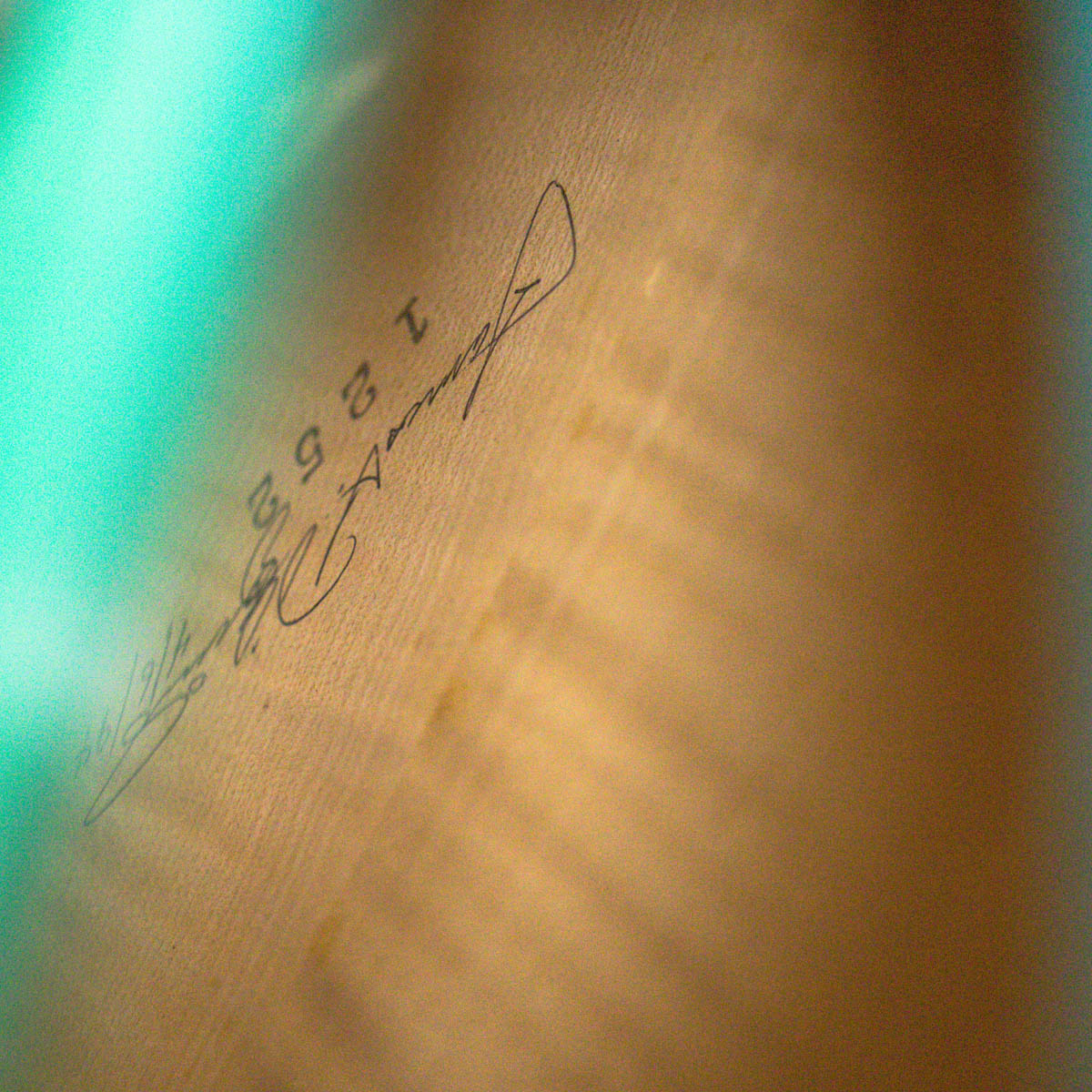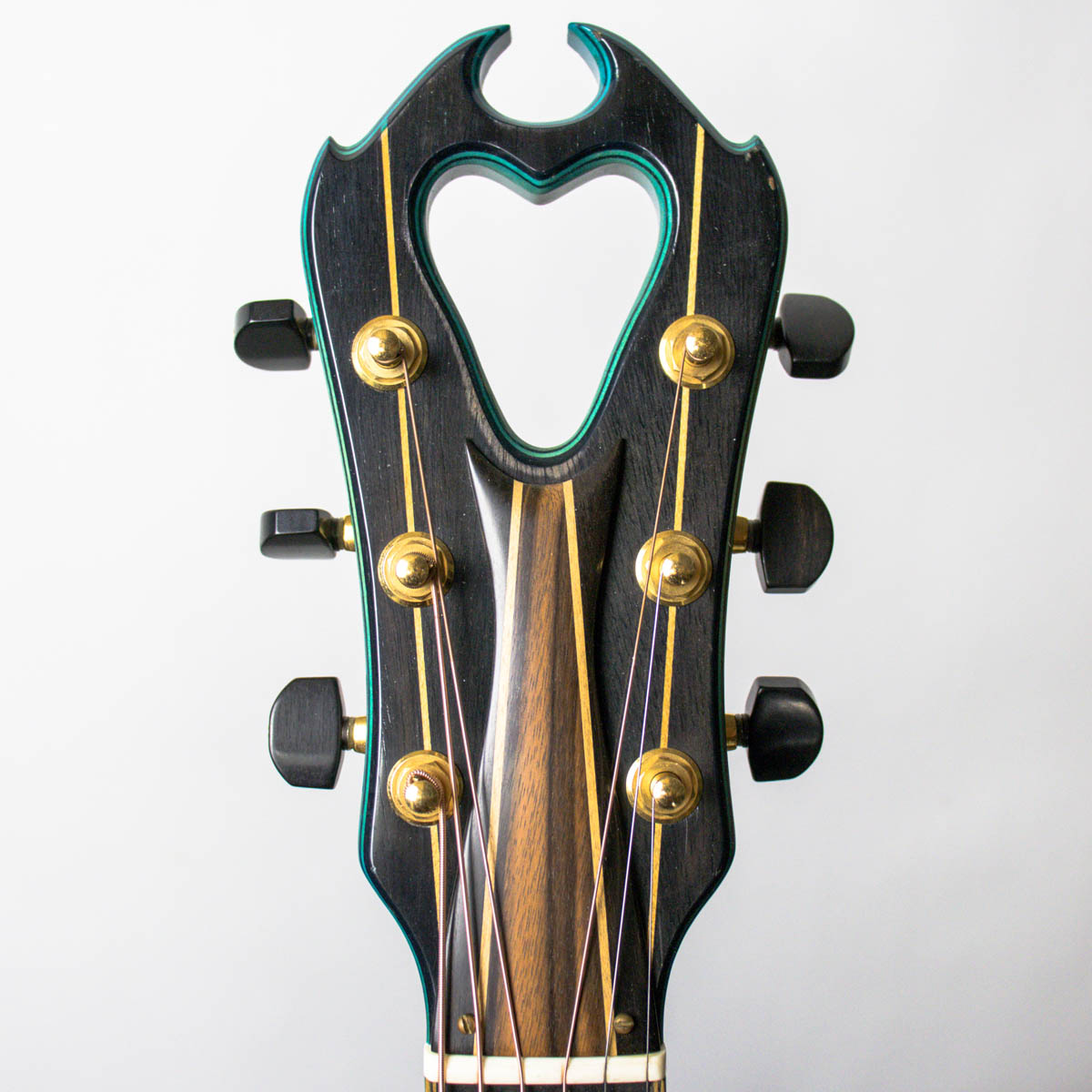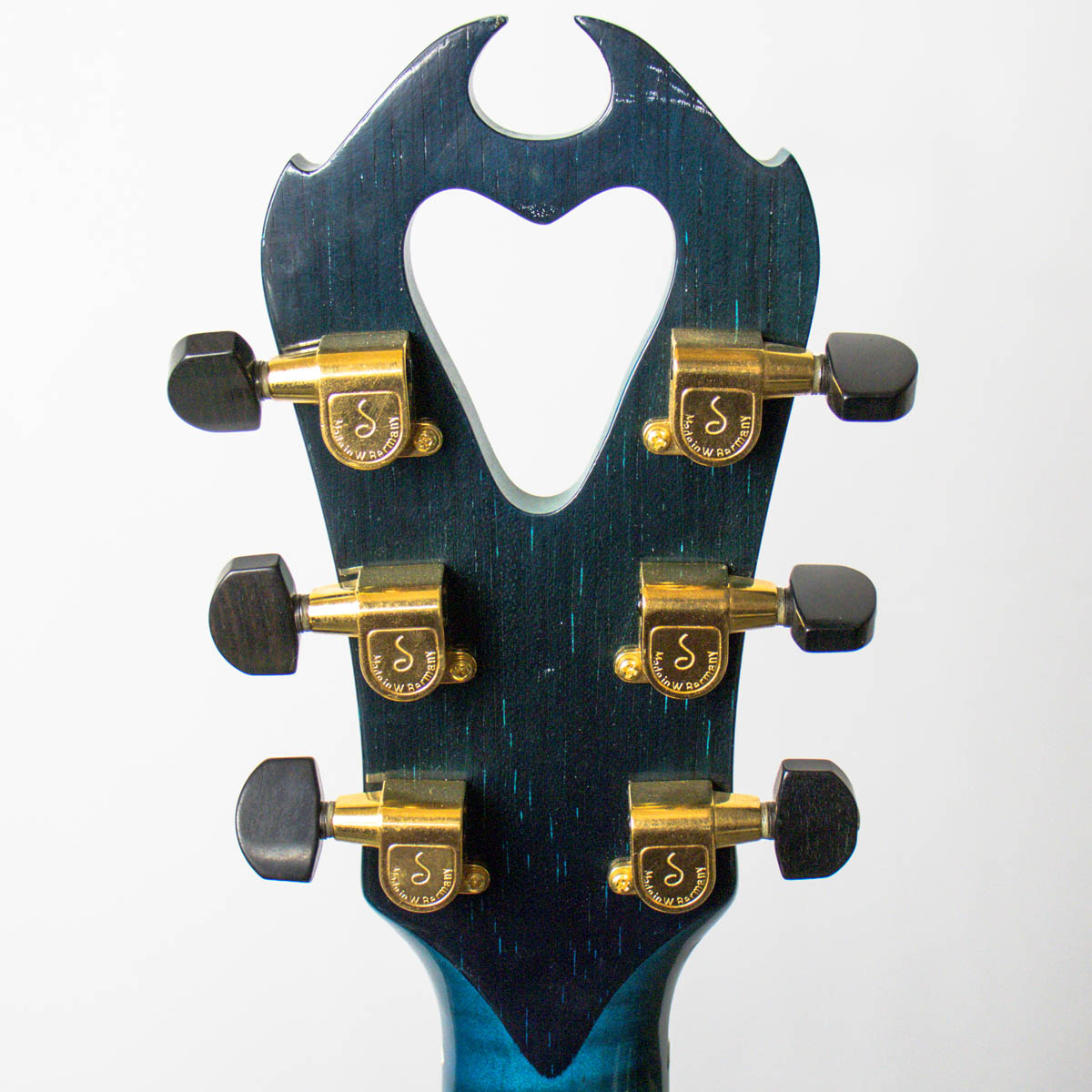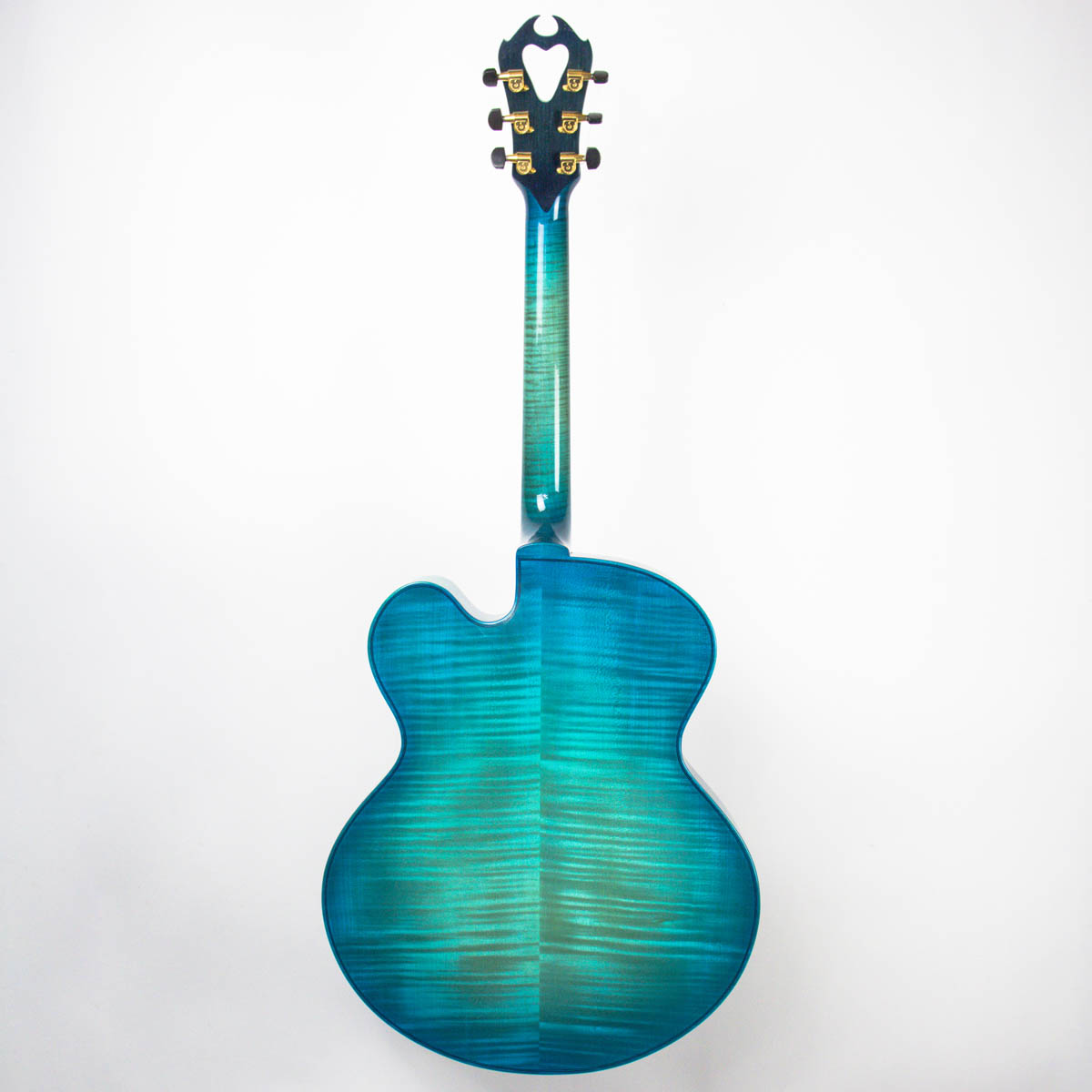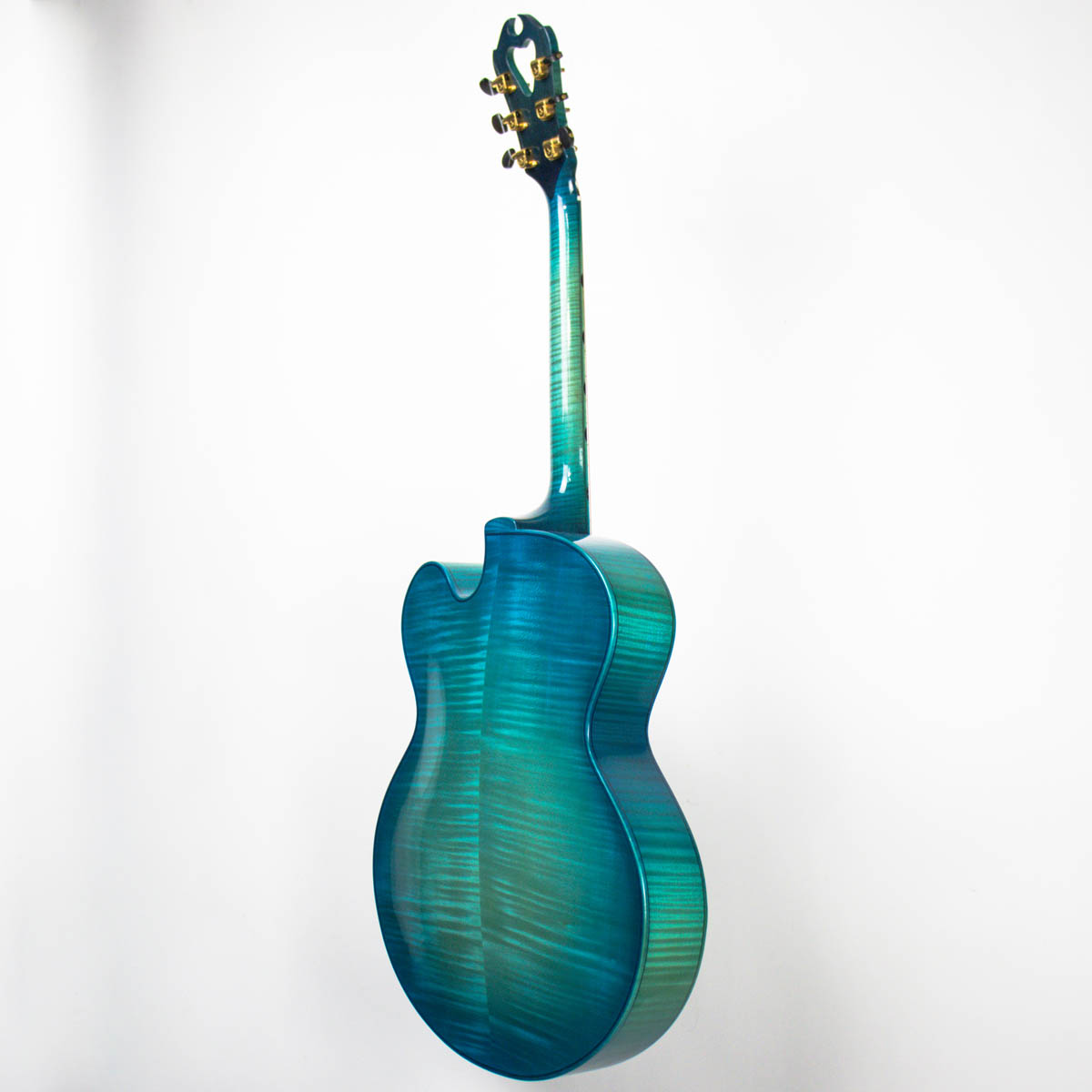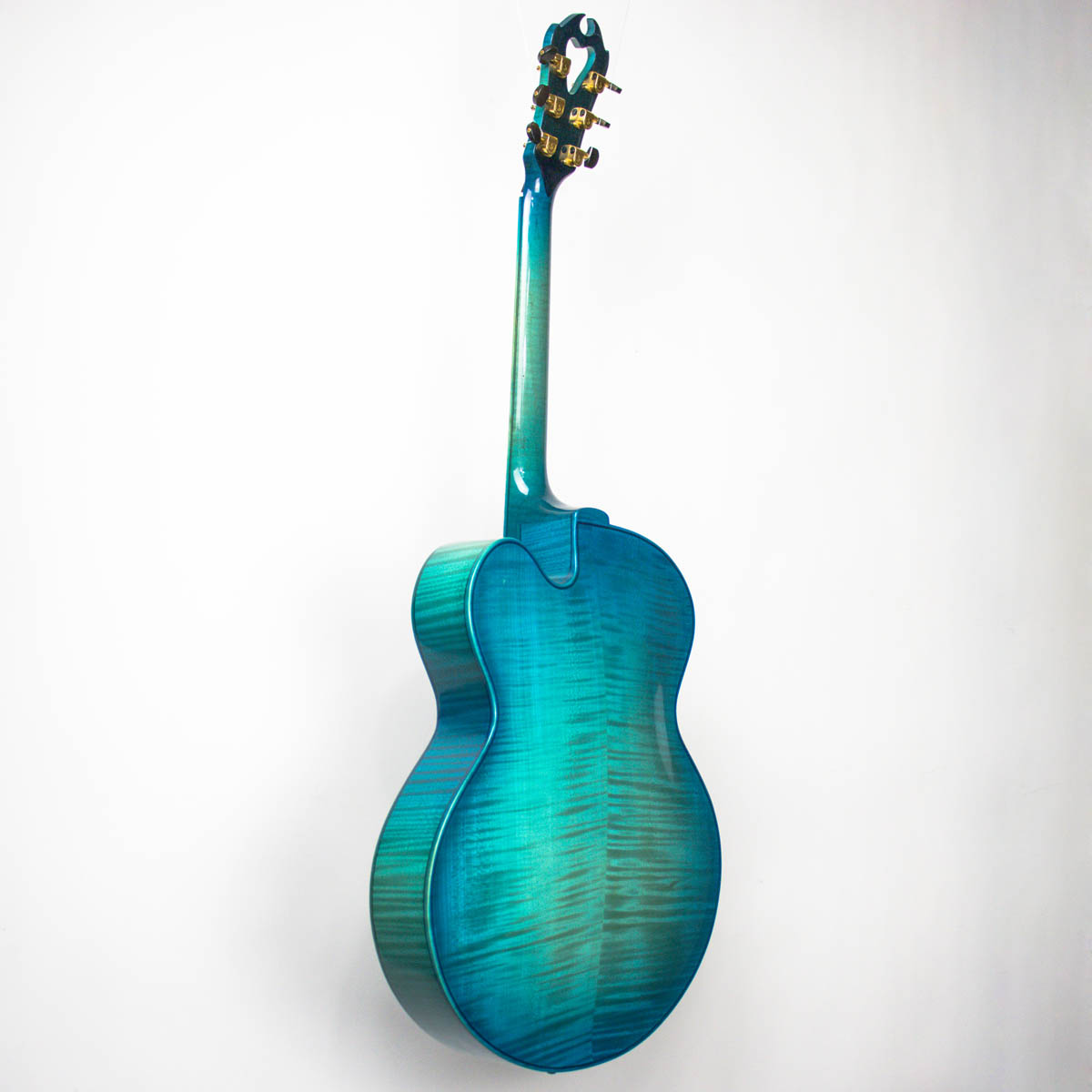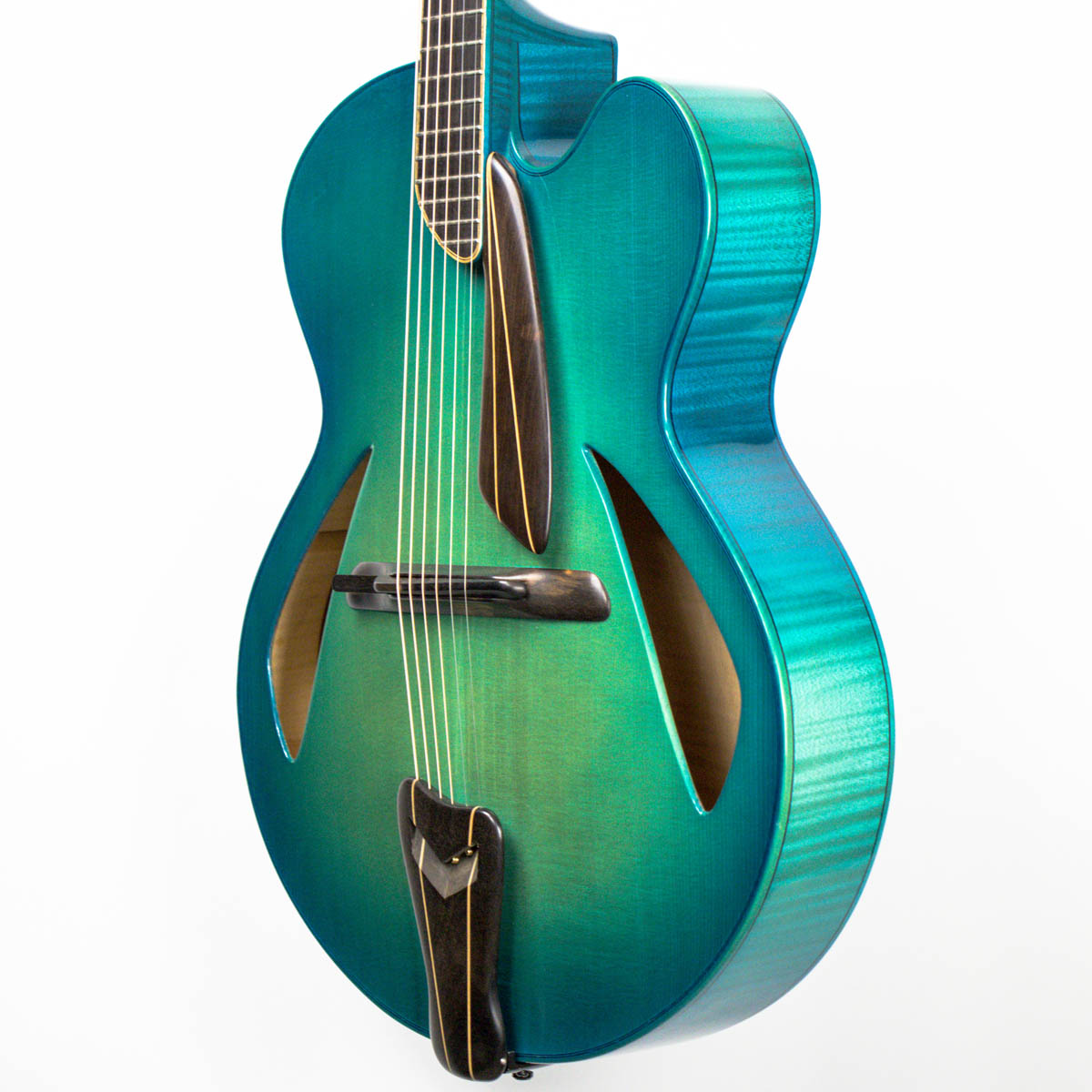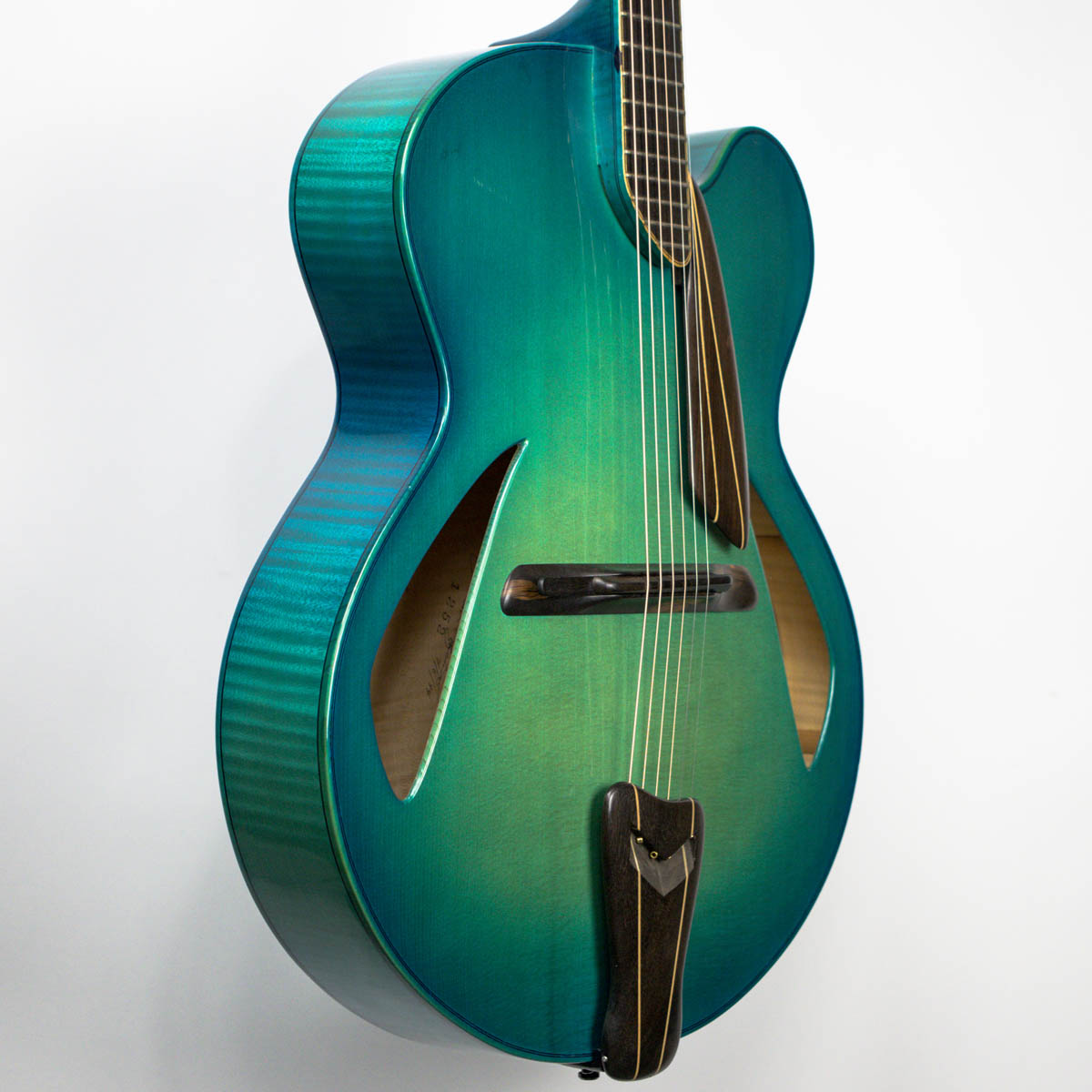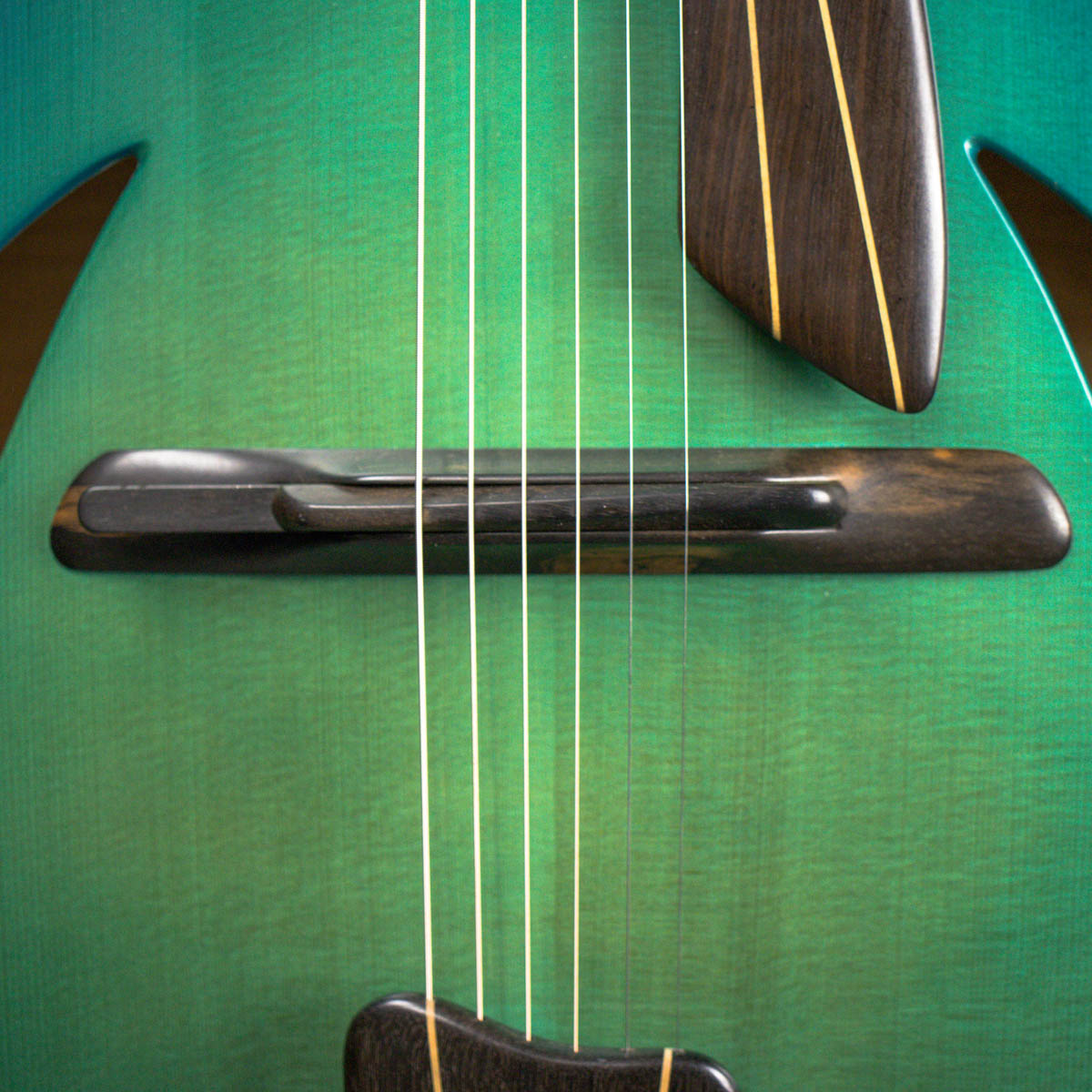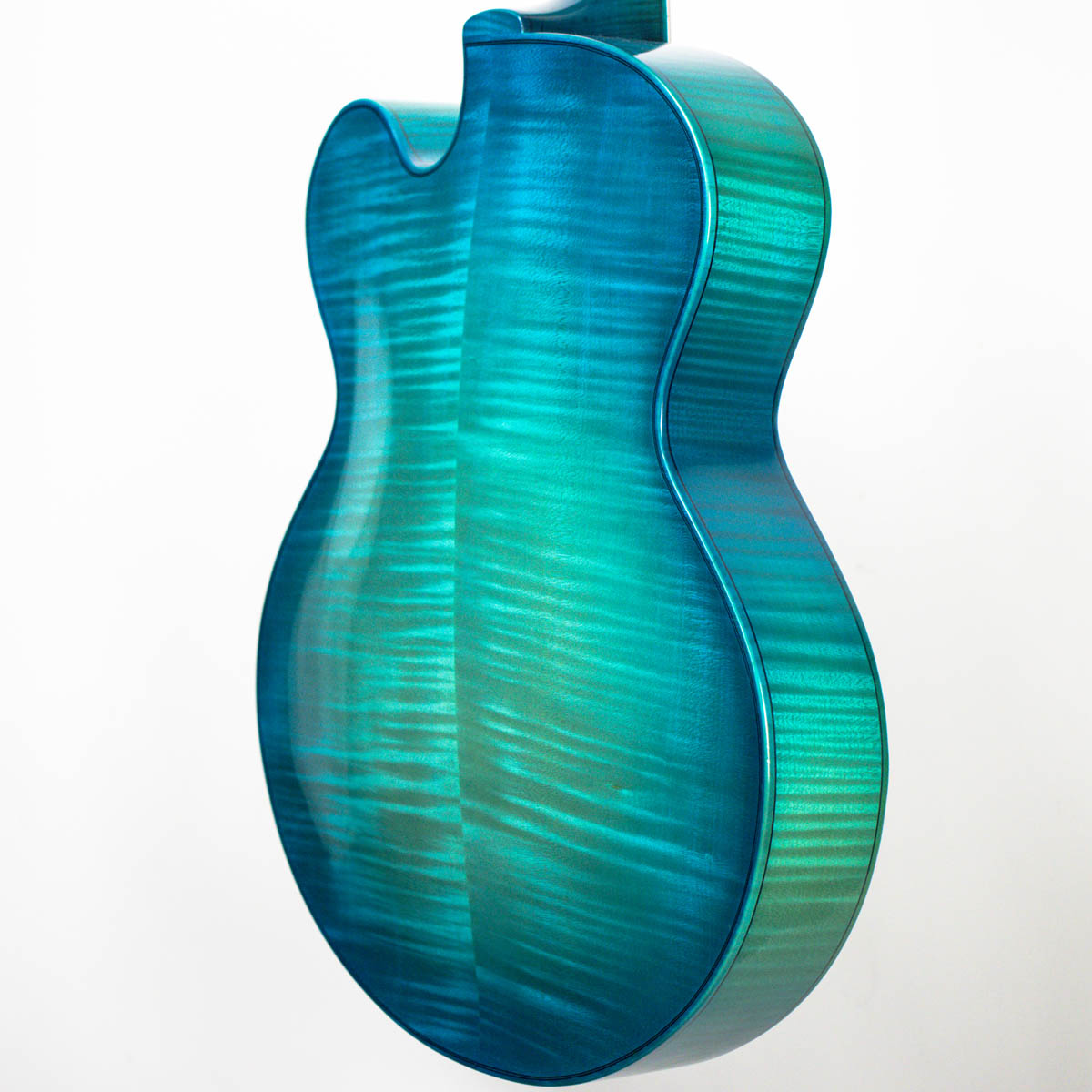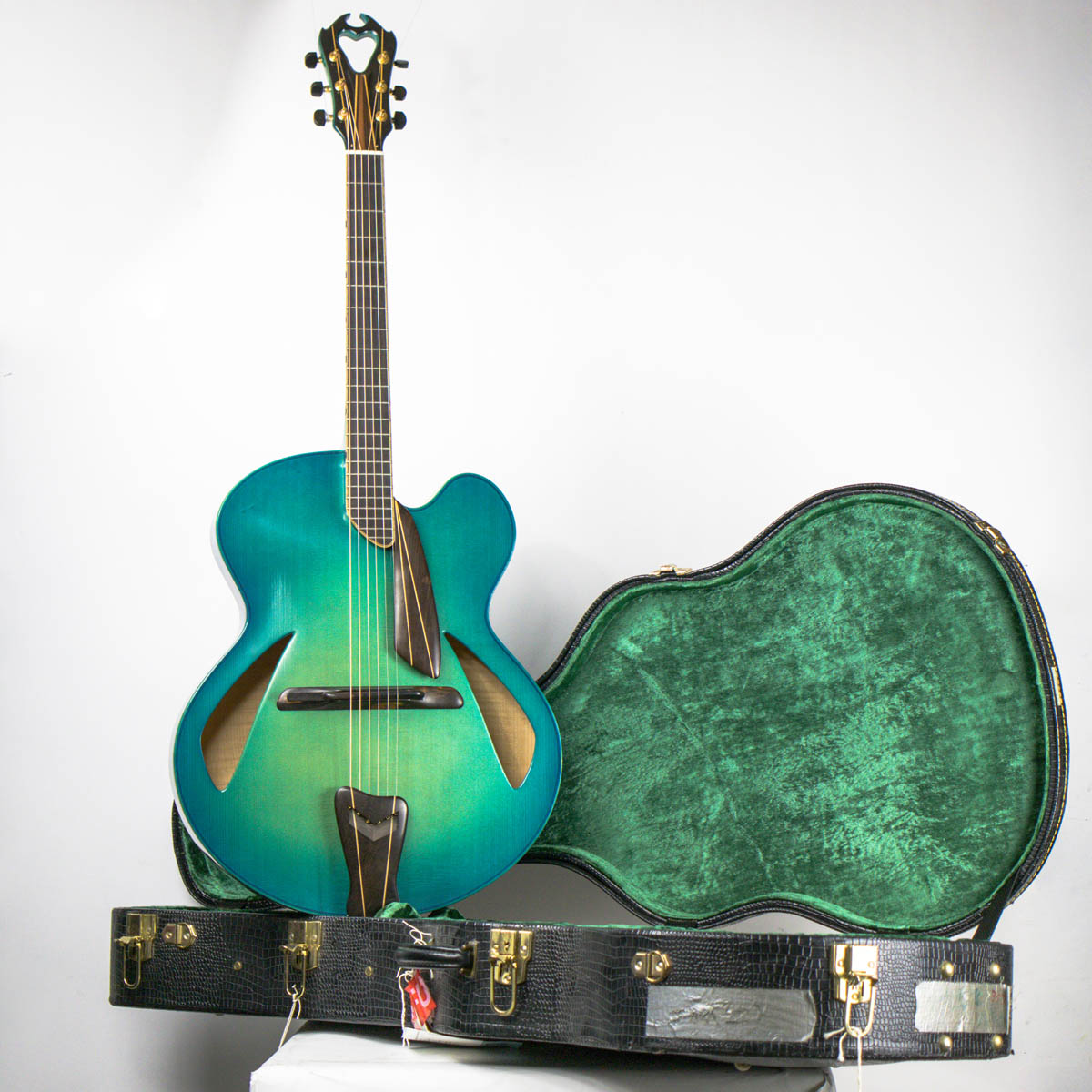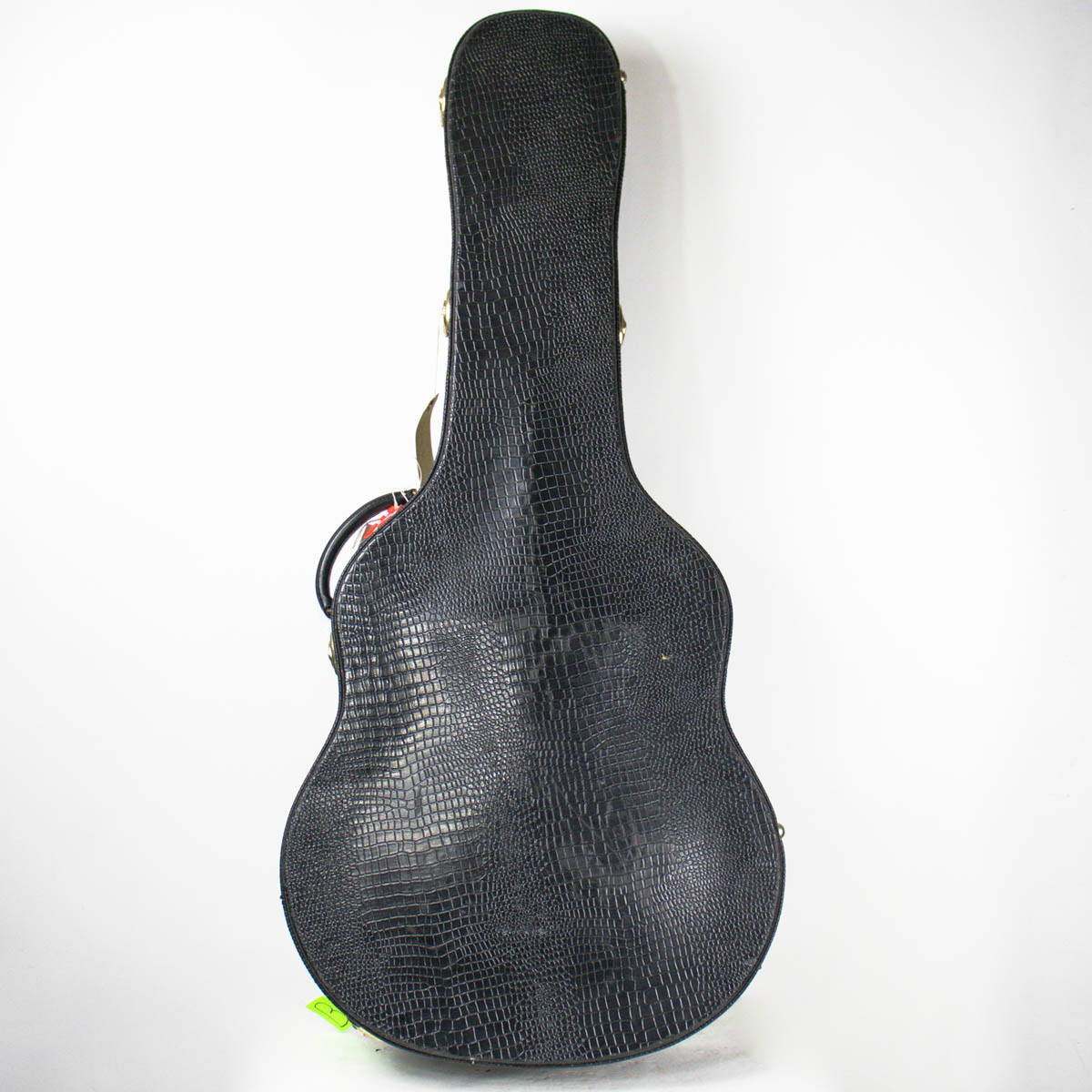Jimmy D’Aquisto–Centura Deluxe
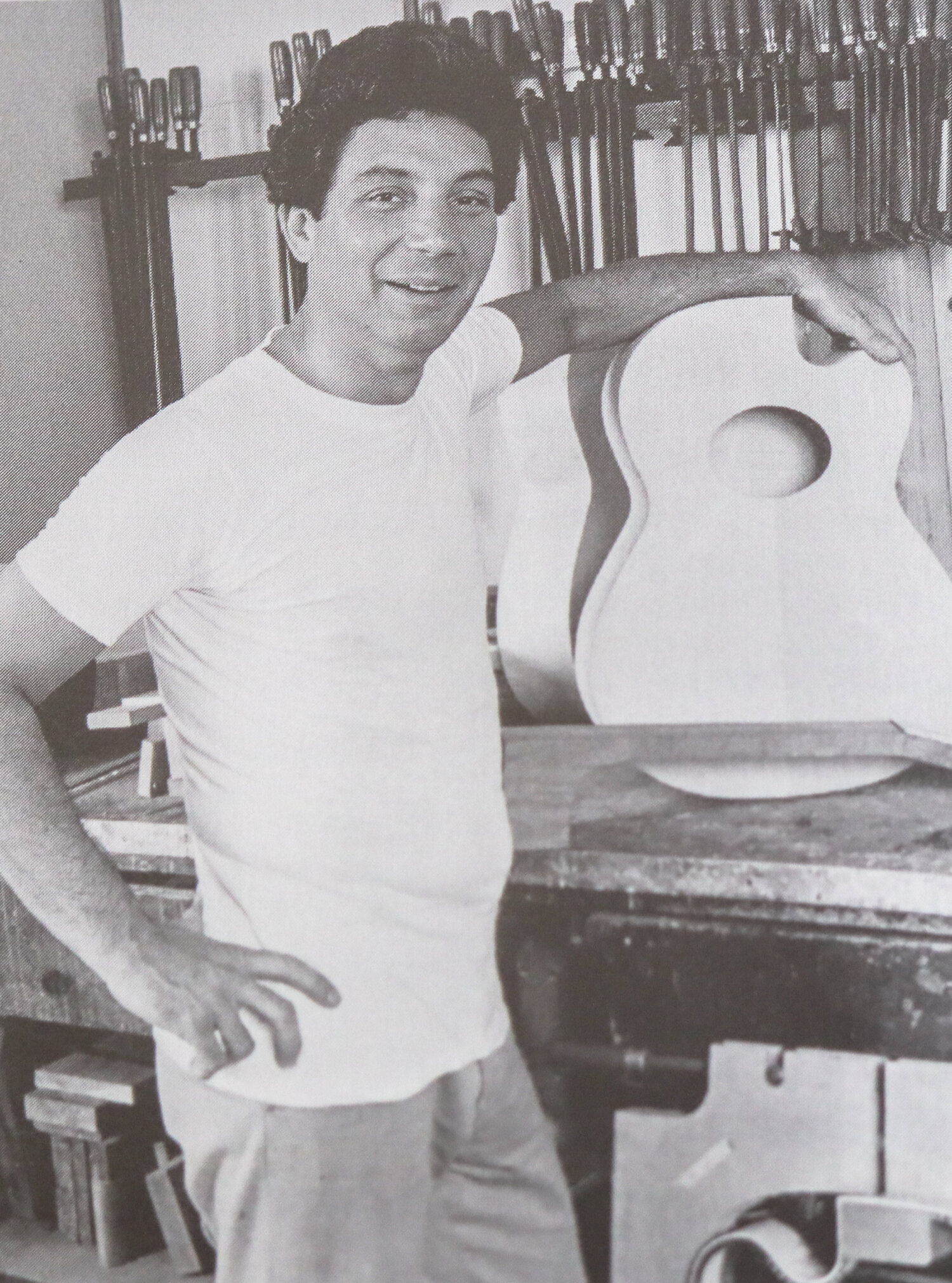
The late James “Jimmy” D’Aquisto is arguably the most important archtop builder of the past century. When Jimmy was only seventeen years old, he began apprenticing under the grandfather of archtop guitar builders, John D’Angelico. Over the years, D’Aquisto paid his dues, and learned the finer details of guitar-making with D’Angelico, as he advanced from sweeping up the shop to assisting D’Angelico in completing guitars in the final years of D’Angelico’s life.
After D’Angelico’s passing, Jimmy built guitars under the D’Angelico name, and soon began constructing masterpieces under his own name. As he worked on perfecting his craft D’Aquisto managed to build specific tone and playability into his instruments in accordance with the needs of his clients. By experimenting with the construction and materials that affect the tone of a guitar, D’Aquisto pioneered the way for other notable builders who followed his lead after his passing. D’Aquisto was an artist and a true master luthier whose work changed the perception of what was possible in the world of archtop guitar-making as he created the perfect balance between traditional and modern approaches.
In 1994, shortly before D’Aquisto’s death the next year, Scott Chinery commissioned D’Aquisto to build the inspiration for this collection, the Blue Centura Deluxe. Chinery requested that D’Aquisto build an eighteen inch archtop with a blue lacquer only attainable from a single manufacturer in Amsterdam, New York. Like many of other D’Aquisto later masterworks, the Blue Centura Deluxe utilizes only the bare essentials of construction to enhance the sound as all unnecessary visual appointments are thrown to the wayside. The Blue Centura Deluxe features a concise design with a spruce top, flamed maple, back, sides, and neck wood. The neck also displays an ebony fingerboard with maple binding and ebony side inlays. Macassar ebony and strips of maple are used throughout the bridge, pickguard, tail piece, truss rod cover and headstock veneer. The bridge is another prime example of D’Aquisto’s innovative mind as it features an adjustment slider to easily manipulate the intonation of the guitar. Just as he eliminated any non-essential frills that might detract from the sound, Jimmy eschewed the standard archtop bridge with metal wheels to adjust the height in favor of his wedge approach, which allowed for wood and only wood to transmit vibrations into the soundboard. While less practical than the bridge systems used by all of the other luthiers in the collection, it remains a non-compromising approach to the purest possible sound transmission in the guitar.
